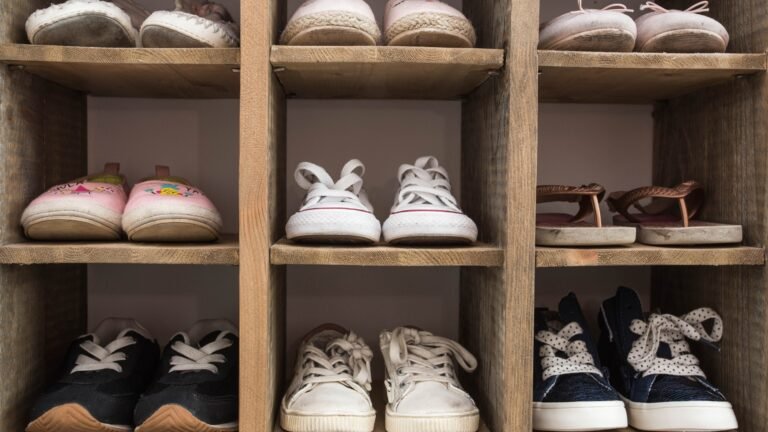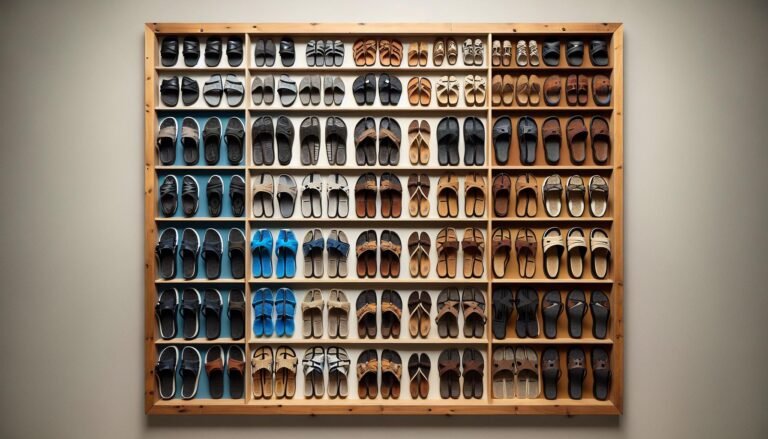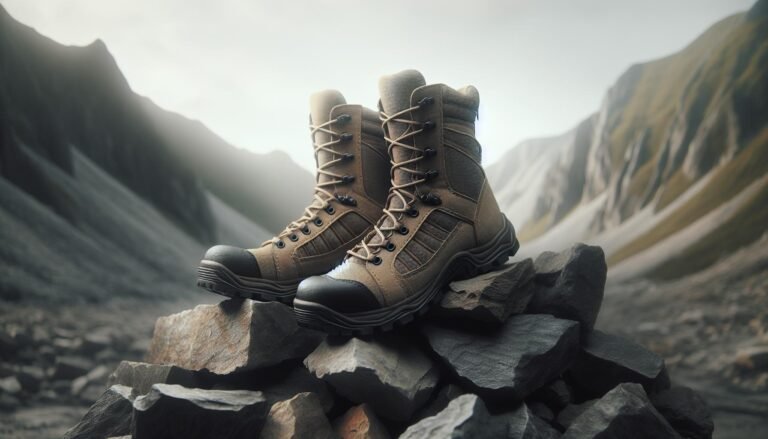Can You Wash Ballet Slippers? Tips for Keeping Them Clean
Ballet slippers are more than just dancewear; they’re an extension of a dancer’s body, crucial for performance and practice. But like any well-loved item, they get dirty. I’ve often found myself staring at my worn and soiled slippers, wondering, can you wash ballet slippers without ruining them? It’s a common question among dancers, and luckily, I’ve got the answers.
Over the years, I’ve learned that keeping your ballet slippers clean isn’t just about aesthetics; it’s essential for hygiene and longevity. Whether you’re dealing with canvas or leather, there’s a right way to clean them. Stick around as I dive into the dos and don’ts of washing ballet slippers, ensuring they stay in tip-top shape for every plié and pirouette.
Key Takeaways
- Ballet Slipper Maintenance is Essential: Keeping ballet slippers clean is crucial not just for aesthetics but for hygiene, grip, performance, and longevity. Regular cleaning prevents bacterial buildup, unpleasant odors, and ensures dancers maintain a good grip on the floor, enhancing safety during performances.
- Different Materials Require Different Care: Ballet slippers are primarily made from canvas or leather, each demanding specific cleaning methods. Canvas slippers can often be machine washed with gentle care, whereas leather slippers should be delicately cleaned with a damp cloth and specific products to avoid damage.
- Proper Washing Techniques: For canvas slippers, hand washing with lukewarm water and mild detergent is recommended, air drying away from direct heat to maintain shape. Leather slippers should be lightly wiped with a damp cloth and conditioned after cleaning to keep the leather supple and prevent cracking.
- Maintaining Cleanliness Reduces Frequent Washing: Regular maintenance such as airing out slippers, spot cleaning stains immediately, and proper storage can significantly prolong the life of the slippers. This reduces the need for frequent washing, which can wear down the materials faster.
- Importance of Using the Right Products: Utilizing specialized cleaning and conditioning products for leather slippers, and mild detergents for canvas slippers, ensures that the materials are not damaged in the cleaning process. Testing any new product on a small area before full application is crucial to prevent potential damage.
Importance of Clean Ballet Slippers

When I first started dancing, I underestimated the importance of maintaining clean ballet slippers. It wasn’t long before I realized that cleanliness goes beyond mere aesthetics—it’s critical for both hygiene and the slipper’s longevity. Ballet slippers, after all, are an extension of a dancer’s body, mirroring every emotion and movement on stage. Their maintenance should never be overlooked.
Keeping ballet slippers clean helps prevent the build-up of bacteria and odors. Imagine rehearsing for hours every day; sweat and dirt accumulate, creating a breeding ground for bacteria. This not only leads to unpleasant smells but can also cause skin infections, which no dancer wants to deal with.
Moreover, clean slippers ensure Better Grip and Performance. Dirt and oils can affect the slipper’s material, compromising its integrity and the dancer’s grip on the floor. For ballet, where every step and turn requires precision, a slip could spell disaster. By maintaining clean slippers, dancers can avoid this risk, ensuring their performances are not just beautiful but safe too.
The longevity of the ballet slippers is also significantly extended through regular cleaning. Quality ballet slippers aren’t cheap, and replacing them frequently isn’t ideal for any dancer, particularly students or those just embarking on their professional journey. Proper care and cleaning can save not only money but also time spent breaking in new slippers, allowing dancers to focus on their art.
Understanding the importance of keeping ballet slippers clean, it becomes evident that washing them—correctly and with care—is not just recommended but necessary. However, the process involves more than simply tossing them into the washing machine.
Materials: Canvas vs. Leather
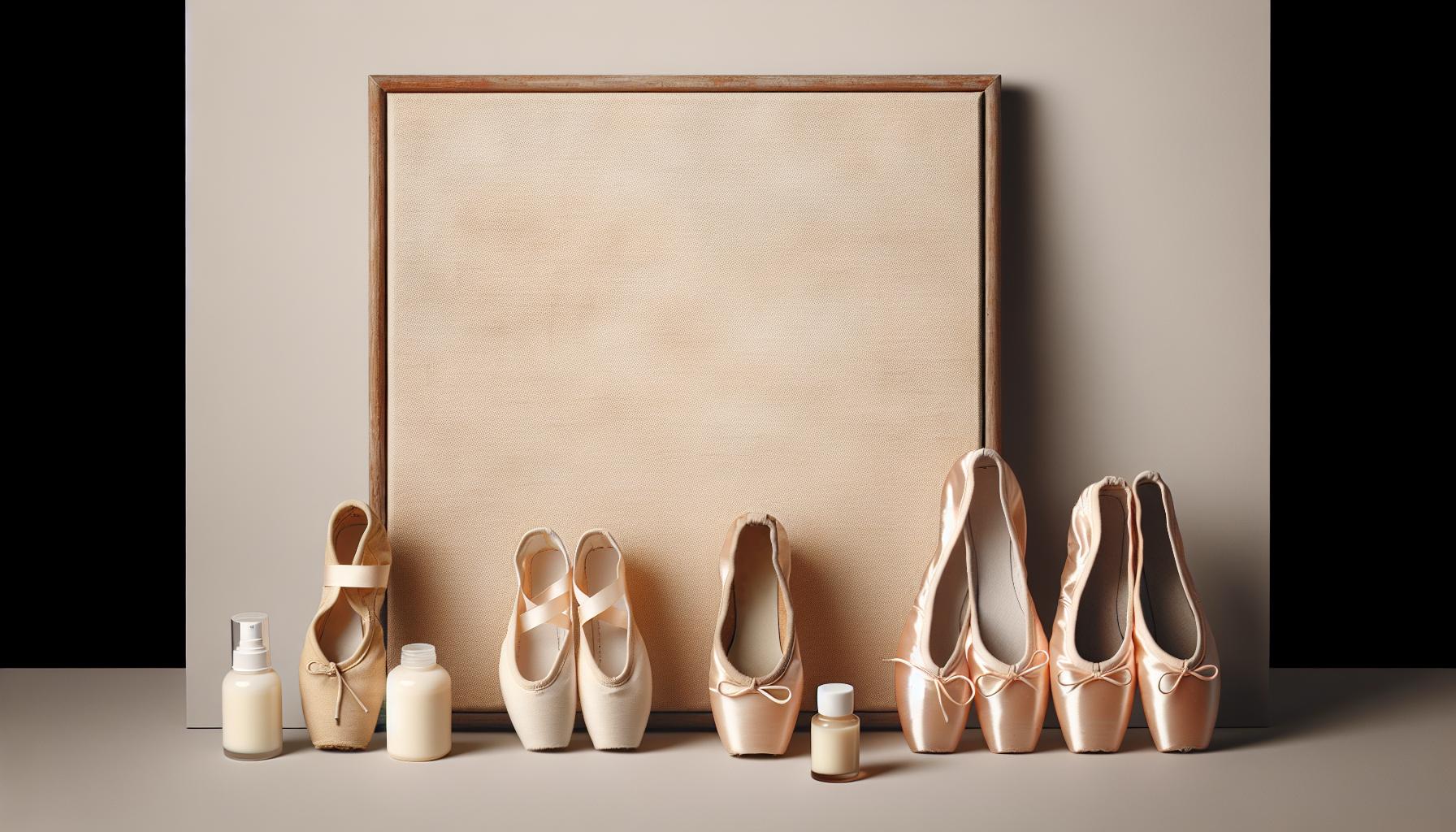
When deciding whether you can wash ballet slippers, understanding the material they’re made from is crucial. Ballet slippers come primarily in two materials: canvas and leather. Each type requires different care methods to maintain their shape, quality, and performance level.
Canvas Ballet Slippers
Canvas slippers are known for their durability and ease of care. They’re typically machine washable, which makes them a convenient choice for dancers who are often on the go. Here’s how I handle them:
- Remove any loose dirt before washing.
- Use a gentle, mild detergent and cold water setting.
- Avoid using a dryer as high heat can warp the shape. Instead, air dry them away from direct sunlight.
With canvas slippers, it’s all about ensuring they’re thoroughly dry before the next use to prevent any mold or mildew buildup.
Leather Ballet Slippers
Leather presents a different challenge. Leather ballet slippers cannot be tossed in the washing machine without risking severe damage. Instead, I recommend these steps:
- Gently wipe the surface with a damp cloth to remove surface dirt.
- For tougher stains, use a specialized leather cleaner.
- Condition the leather after cleaning to keep it supple.
It’s vital to remember that leather slippers will require more meticulous care to prevent them from cracking or drying out. Regular maintenance extends their life span significantly and keeps them performance-ready.
The key to washing ballet slippers lies in recognizing the material and treating it with the appropriate method. Whether it’s the practicality and ease of cleaning canvas slippers or the careful nurturing of leather ones, both can maintain their optimal condition with the right approach.
Washing Canvas Ballet Slippers

When it comes to keeping canvas ballet slippers in top condition, washing them correctly is key. I’ve found that many dancers aren’t sure if they can wash their canvas slippers without damaging them. The answer is yes, but there are some important steps to follow to ensure they maintain their shape and integrity.
First, remove any loose dirt by gently brushing the surface with a soft brush. This pre-cleaning step is crucial to avoid rubbing dirt deeper into the fabric during the washing process.
Next, you’ll want to focus on hand washing your slippers. Fill a basin with lukewarm water and add a small amount of mild detergent. Submerge the slippers and gently scrub them with your hands or a soft cloth. Be gentle to prevent the material from stretching.
It’s imperative to never use hot water or harsh chemicals, as these can cause the canvas to shrink or fade. Similarly, machine washing, though tempting, is generally not recommended. The aggressive spin and rinse cycles can distort the shape of your slippers, leading to an imperfect fit.
For drying, avoid direct sunlight and heat sources like radiators or hairdryers. Instead, press the excess water out gently and let them air dry. Placing them in a well-ventilated area works best. To help the slippers retain their shape while drying, I sometimes stuff them with paper towels.
Remember, frequent washing of canvas ballet slippers can lead to premature wear. So, it’s best to wash them only when absolutely necessary and focus more on spot cleaning for minor soiling. Regular maintenance, like brushing off dirt after each use, can significantly reduce the need for washing, thus prolonging the life of your slippers.
Washing Leather Ballet Slippers

When it comes to leather ballet slippers, the approach needs to be a bit different from canvas ones. Leather is more delicate when exposed to water, and therefore, needs a more careful treatment. I’ve learned that the key is to avoid submerging them in water, which can warp the material and lead to unwelcome stiffness upon drying.
What I always recommend is opting for a damp cloth method. Simply take a soft cloth, dampen it with water mixed with a small drop of mild soap, and gently wipe the surface of the slippers. It’s crucial to use as little moisture as possible and to perform this action gently to avoid saturating the leather. After cleaning, another crucial step is to use a dry cloth to pat them down, removing any excess moisture.
Air drying plays a pivotal role here. Never be tempted to speed up the process with direct heat sources like hairdryers or radiators. Such methods can not only warp leather but also cause it to crack. Instead, let them air dry naturally, away from direct sunlight and heat. I usually place them in a well-ventilated area and stuff them with paper to help maintain their shape and absorb any internal moisture.
For stubborn stains or deeper cleaning needs, I’ve found that specialized leather cleaning products do wonders. They’re designed to protect the material’s integrity while providing a deeper clean than soap and water can achieve alone. However, it’s vital to follow the product instructions carefully and to test it on a small, inconspicuous area of the slipper first to ensure it doesn’t discolor or damage the leather.
Maintaining the suppleness of leather ballet slippers also requires periodic conditioning. Leather conditioners, applied sparingly, can prevent the material from drying out and cracking, ensuring the slippers remain comfortable and flexible.
Tips for Maintaining Clean Ballet Slippers
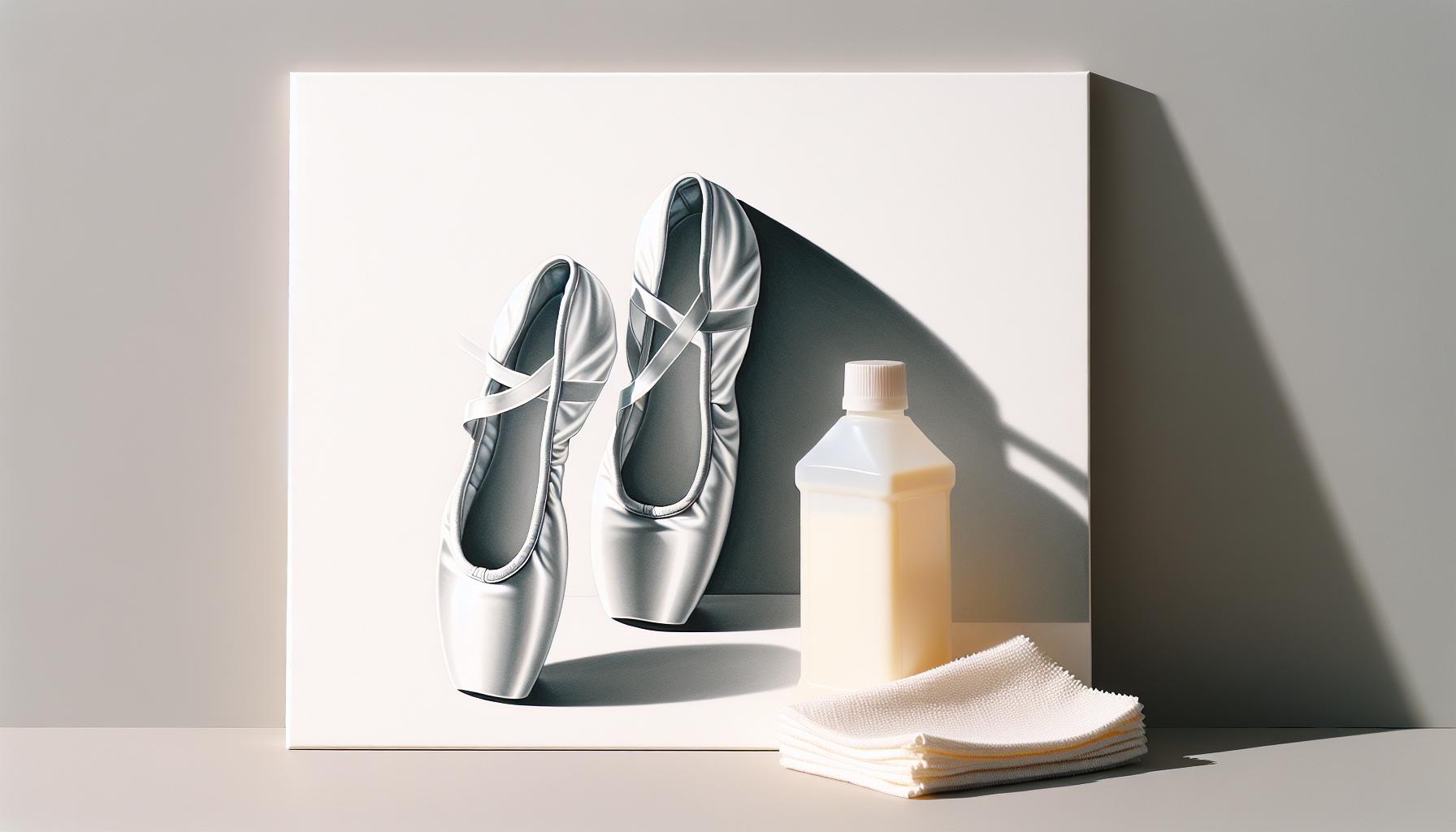
Maintaining clean ballet slippers isn’t just about aesthetics; it’s essential for the longevity and performance of your dance footwear. Over the years, I’ve discovered several methods that work wonders in keeping slippers in top shape, much of which boils down to daily care and proper storage.
First off, always air out your slippers after each use. Moisture can be a ballet slipper’s worst enemy, leading to odor and breakdown of materials. Simply removing them from your dance bag as soon as you get home allows them to dry out completely, preventing unwanted smells and deterioration.
Another tip I’ve found invaluable is spot cleaning immediately after stains occur. Whether it’s dirt from the dance floor or a random spill, tackling the stain right away can prevent it from setting in deeply. For canvas slippers, a quick spot clean with a damp cloth and mild detergent usually does the trick. For leather, a specialized leather cleaner is your best bet.
In addition, using protective sprays designed for the specific material of your ballet slippers can provide an extra layer of defense against dirt and stains. Just make sure to test the spray on a small, inconspicuous area of the slipper first to ensure it doesn’t alter the color or texture of the material.
Storing your ballet slippers properly can also significantly extend their life. Avoid crumpling them into tight spaces where they can become misshapen. Instead, store them flat, ideally in a breathable shoe bag that allows air circulation but protects them from dust and direct sunlight.
These straightforward habits have kept my ballet slippers looking and feeling fresh, dance after dance. By incorporating these practices into your routine, you’ll not only enhance the appearance of your ballet slippers but also their longevity and, by extension, your performance on the dance floor.
Conclusion
Keeping your ballet slippers in top shape doesn’t have to be a daunting task. By incorporating daily care, proper storage, and immediate action on stains, you’re not just maintaining their aesthetic appeal but also ensuring their longevity. Remember, the way you treat your slippers off the dance floor impacts your performance on it. So, don’t overlook these simple yet effective steps. They’re your best bet for preserving the life and look of your beloved ballet footwear. With the right care, your slippers will continue to support every pirouette and plié, keeping you dancing beautifully for years to come.
Frequently Asked Questions
How often should you clean your ballet slippers?
Daily care and spot cleaning immediately after use are recommended to prevent stains from setting in and to maintain the ballet slippers’ appearance and performance.
What is the best way to store ballet slippers?
Storing ballet slippers flat in breathable shoe bags is the best practice. This helps in maintaining their shape and prevents the accumulation of moisture, which can lead to odor and degradation of the material.
Can I use regular cleaners on leather ballet slippers?
No, it’s advisable to use specialized cleaners designed for leather to prevent damage. Regular cleaners might contain harsh chemicals that can deteriorate the leather’s quality.
Are protective sprays necessary for ballet slippers?
Yes, applying protective sprays can help in repelling water and stains, thereby extending the durability and maintaining the appearance of ballet slippers.
How can airing out slippers benefit them?
Airing out slippers after each use helps in evaporating the moisture accumulated from sweat. This prevents odor, mold growth, and maintains the material’s integrity, contributing to the slippers’ longevity.


